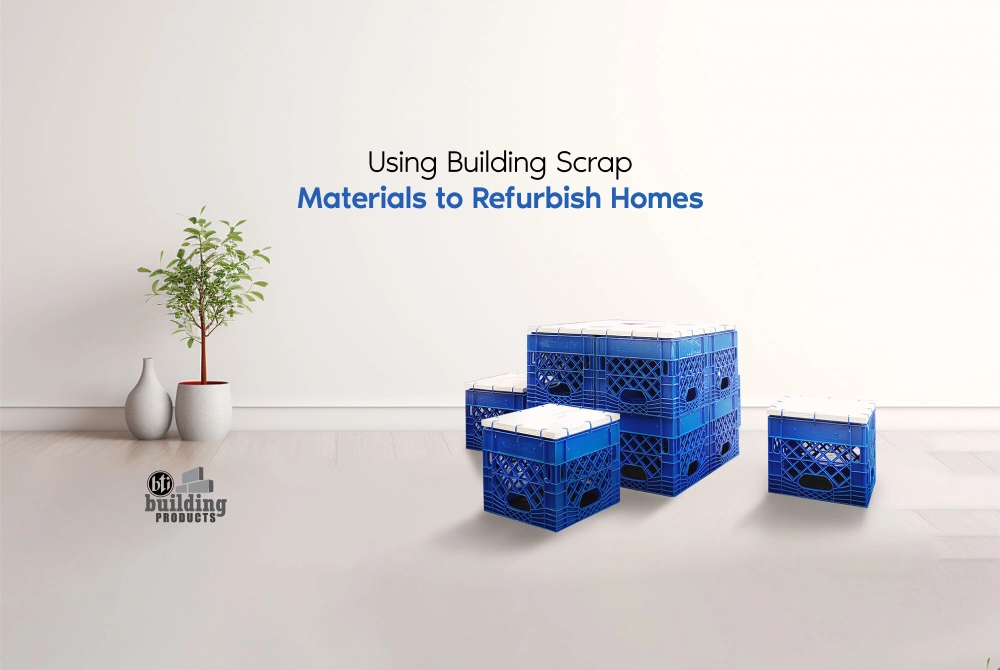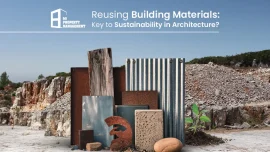
Using Building Scrap Materials to Refurbish Homes: A Smart and Sustainable Choice
Introduction
In an age where sustainability meets creativity, using building scrap materials to refurbish homes has become more than just an eco-friendly trend; it’s a cost-effective and innovative way to add character to your space.
Across Bangladesh, homeowners and builders are discovering that leftover construction materials such as wood offcuts, metal frames, tiles, and reclaimed concrete can be repurposed beautifully to give homes a fresh new look without increasing waste.
1. What Are Building Scrap Materials?
Building scrap materials refer to leftover or excess items from construction sites, renovation projects, or demolitions. These can include:
- Broken or surplus tiles
- Wood planks and pallets
- Metal rods, sheets, and frames
- Concrete debris and bricks
- Glass panels and fixtures
- PVC and plastic piping
When sorted and reused properly, these materials can reduce construction waste and lower costs while adding a unique touch to your refurbishment project.
2. Why Reuse Scrap Materials in Home Refurbishment?
a. Cost Efficiency
Using scrap materials helps cut down on the cost of new supplies. Many of these can be repurposed with minimal processing, offering great value for budget-conscious homeowners and contractors.
b. Environmental Sustainability
Bangladesh’s construction sector generates thousands of tons of waste every year. By recycling and reusing building scrap, we can reduce landfill waste and conserve natural resources, a small step toward greener cities.
c. Unique Aesthetic Appeal
Reclaimed materials bring texture, colour, and history into your home. Imagine a feature wall made of old bricks or a rustic coffee table built from salvaged wood; every piece tells a story.
3. Creative Ways to Reuse Building Scrap Materials
a. Upcycle Old Wood into Furniture
Old doors, window frames, and wooden pallets can be transformed into stylish shelves, benches, or tables. The natural grain of aged wood adds warmth and authenticity to interior spaces.
b. Reclaimed Bricks and Concrete
Broken bricks or concrete chunks can be reused to create garden pathways, boundary walls, or even outdoor seating areas. They add a rustic charm that new materials often can’t match.
c. Metal and Glass for Modern Touches
Metal scraps can be welded into light fixtures, railing designs, or decorative partitions. Similarly, recycled glass panels can be used creatively for skylights, windows, or room dividers.
d. Repurposed Tiles for Artistic Finishes
Use leftover tiles to create mosaic backsplashes, colourful tabletops, or bathroom wall accents. It’s an affordable way to introduce vibrancy and art into your home.
4. Safety and Preparation Tips
Before using any scrap material, make sure to:
- Inspect for structural damage, rust, or decay.
- Clean and sanitise thoroughly, especially in the case of wood or glass.
- Consult professionals for load-bearing structures.
- Seal and treat reclaimed wood to prevent termites or moisture damage.
Conclusion
Refurbishing your home using building scrap materials isn’t just an act of creativity — it’s a commitment to a greener and smarter way of living. When combined with quality materials from bti Building Products, your refurbishment project can achieve both aesthetic excellence and environmental responsibility.




